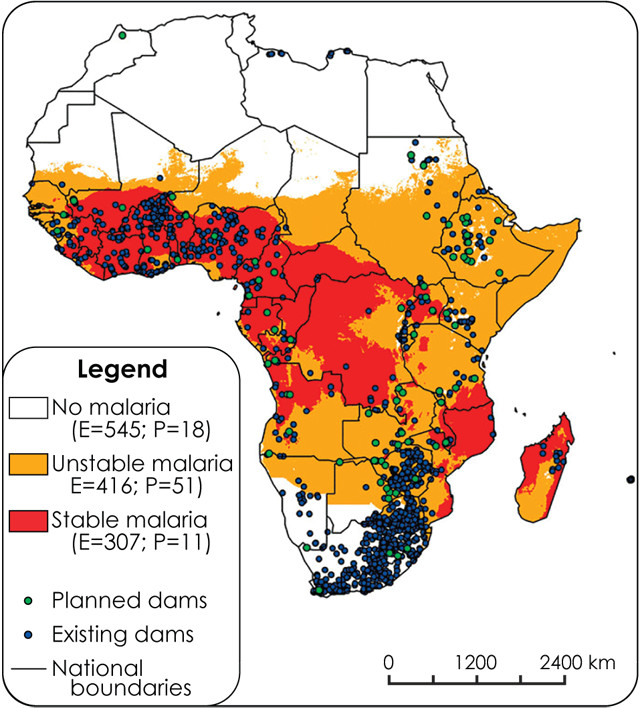
by Timothy Oleson Thursday, December 31, 2015

Map of existing and planned large dams considered in a new study that analyzed rates of malaria infection near the dams in areas where malaria transmission is stable (perennial) versus unstable (seasonal). Credit: Kibret et al., Malaria Journal, 2015.
Large dams cause more than 1 million cases of malaria annually in sub-Saharan Africa, according to the authors of a new study published in Malaria Journal.
Reservoirs and shallow pools impounded by dams offer breeding grounds for the parasite-carrying mosquitoes that transmit the disease, which can be life-threatening if not treated. Although previous work had identified increased rates of malaria infection in populations living close to particular dams, none had mapped the risk broadly across the region.
Researchers compared malaria infection rates in people living within 5 kilometers of 723 dams located in areas of sub-Saharan Africa where malaria occurs with background rates in people living more than 5 kilometers away. (Five kilometers is assumed to be the distance limit of a dam’s influence on malaria infection based on the limited flight ranges of mosquitoes.) Of the 15 million people in the malarial zone, 1.1 million cases of malaria per year are associated with the dams, the team, led by Solomon Kibret of the University of New England in Australia, reported. The increased risk from dams was especially high in areas where malaria transmission occurs only seasonally, possibly, the authors suggested, due to a proportionally greater significance of dammed water reservoirs as mosquito breeding grounds in these areas compared to areas of year-round transmission where breeding habitats are common.
The researchers also noted that their estimates may be conservative considering that hundreds of large dams were not included in the analysis, and that many new dams are in development. “While dams clearly bring many benefits — contributing to economic growth, poverty alleviation and food security — adverse malaria impacts need to be addressed or they will undermine the sustainability of Africa’s drive for development,” Kibret said in a statement.
© 2008-2021. All rights reserved. Any copying, redistribution or retransmission of any of the contents of this service without the expressed written permission of the American Geosciences Institute is expressly prohibited. Click here for all copyright requests.